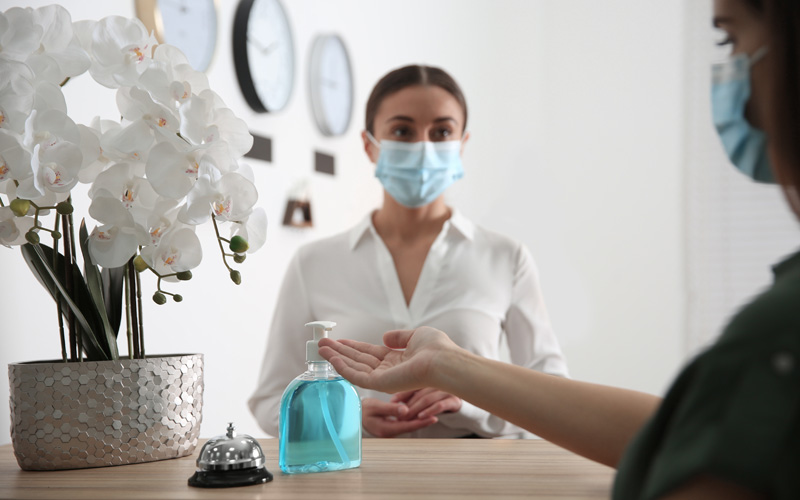There’s no doubt the hospitality industry has taken a beating from the coronavirus pandemic. The combination of travel bans, shelter-in-location orders, and a collapse in consumer confidence has, according to US research by the American Hotel & Lodging Association (AHLA), caused nine times the economic damage experienced in the aftermath of 9/11.
Yet the hospitality industry is nothing if not tough. The AHLA stresses as much when it says “hotels across the country are resilient and focused on creating an environment ready for guests when travel begins to return in 2021.” It believes the sector will add 200,000 direct jobs this year.
The vaccine rollout programs in many regions are all reasons to start believing hope is on the horizon.
It will be a long road, for sure. In the US hotel sector, for example, revenue per available room (RevPAR) is not expected to recover to pre-pandemic levels until 2024. Yet PwC is forecasting that, after continuing to fall in Q1, RevPAR will grow by 19% overall this year.
Yet, recovery must start somewhere and the immediate challenge for hospitality businesses is how to nurture and grow these small seeds of hope.
Aside from the obvious necessity of getting the pandemic under control, success will depend on two key factors -First, how to make customers feel safe enough to travel, go out for meals, and leave their homes for entertainment again. Second, how business models can successfully adjust to make the necessary operational changes profitable.
Creating safe spaces in hospitality
Consumers are clear about what they want to see before they feel confident about returning to hotels, restaurants, bars, and entertainment and leisure venues.
Among restaurant-goers, for example, a US OpenTable survey found nearly three-quarters (72%) rank “communicating strict cleaning policies” as extremely important before they feel confident enough to eat out again. Additionally, 61% said they wanted to see tables spaced at least six feet apart and 57% prioritised limits being placed on the number of guests sat.
The US Future of Hospitality report by Deloitte outlines the many strategies hospitality businesses are pursuing to make all of the above happen. With regards to hygiene, we are seeing major hotel chains forging strategic partnerships with leading health and hygiene brands, for example Hilton working with The Mayo Clinic on its health and safety policies and with Reckitt Benckiser on its cleaning services.
On the topic of space, as well as thinning out the number of available tables in restaurants, Deloitte points to initiatives such as the installation of plexiglass screens between tables, introducing one-way routes around dining areas to control movement, establishing separate spaces for takeout and dine-in service, and increasing outdoor dining space where available.
The Deloitte report also picks up on a small but important detail in the OpenTable survey. Having strict cleaning policies and maintaining social distance alone is not enough – customers are looking for businesses to communicate how they will make them safe. We can all understand the desire for a little reassurance in these difficult times.
Hospitality operators therefore need to double down on their comms and customer relationship programs and make health, safety, and hygiene the priority message. Every available channel, from on-premise signage to websites, social media, and email outreach should be put to use.
Accelerating digital transformation
Another strand to making hotels, restaurants, and all other hospitality venues safer spaces that consumers are happy to visit again is limiting contact between staff and customers. Technology has a key role to play here, and we can see this as accelerating trends that were already in motion before the pandemic struck.
We’re seeing hospitality businesses across the industry step up digitisation. In the near future, we can expect digital menus, ordering, and payment via touchscreen terminals at the table to become common in restaurants. Self-service kiosks will increase their share of point of sale (PoS) solutions, for example to provide no-contact check-in in hotels and ticket vending for leisure and entertainment venues.
Digital transformation also has a key role to play in helping companies adjust their business models to cope with the ‘new normal’. Restaurants having to run at half capacity to maintain social distancing will struggle to remain profitable and will most likely have to look at ways of diversifying their revenue streams.
Online commerce, whether it is expanding home delivery or selling meal kits or other branded produce, is one obvious avenue. But technology can also play a role in increasing on-premise revenues. One example that could be adopted by everyone from restaurants to attractions is to introduce time slot bookings online. A step beyond simply reserving a table, time slots serve to optimize both capacity and customer throughput.
All hospitality businesses already have the technological foundations for pushing these changes – it’s right there in their PoS system. For expert advice on how to make the most of your PoS to support recovery, contact the AURES team today.




